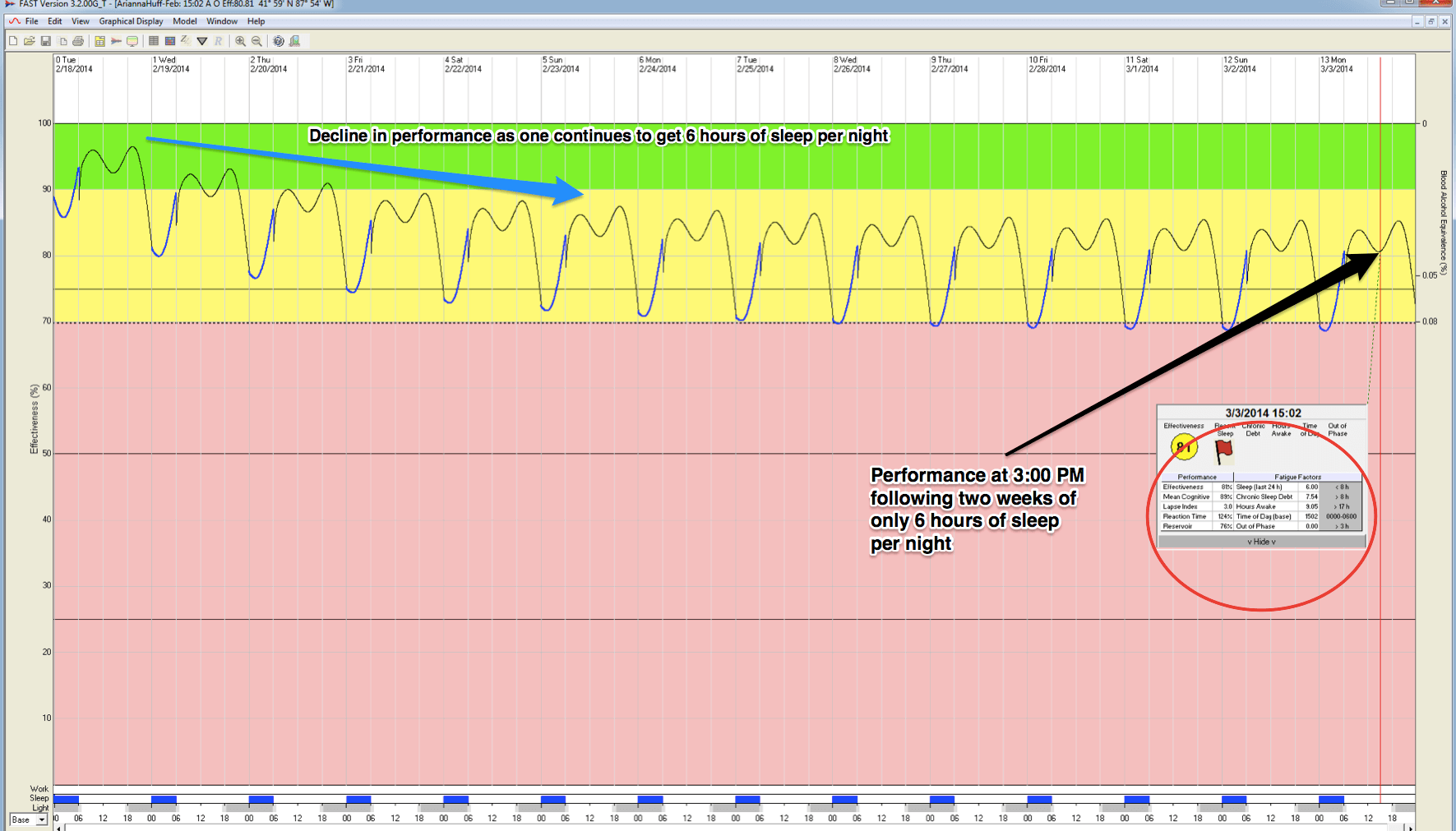Fatigue Science, the global leader in predictive fatigue analytics for mining, transportation and heavy industry, today announced new findings on the relationship between sleep quality and the rigorous schedules faced by shift workers.
Results from the analysis revealed that shift workers’ sleep quality tends to suffer more greatly, the further away the sleep occurs from one’s natural sleeping window. For instance, an individual whose natural sleeping window is 11pm-7am would tend to get poorer quality sleep when required to sleep in the middle of the day.
Critically, the revealed pattern holds for each hour away from the ideal sleeping window, so even incremental changes to a sleep schedule can improve or worsen one’s sleep, fatigue, and ultimately performance on the job. These findings of this study have significant implications for the safety and productivity of all shift workers, and especially those who consider themselves “night owls” or “early birds.”
Sources of Data
Supporting the data for this study, customers of Fatigue Science’s Readi FMIS platform for predictive fatigue management have deployed wearable devices in industrial settings in 96 countries.
In total, over 50,000 industrial operators have provided anonymized and de-identified sleep data for analysis, resulting in an unparalleled dataset of over 4 million sleeps recorded in industrial settings. While all sleep data remains private, the results of the analysis today are only possible due to the unparalleled breadth and depth of de-identified data from Fatigue Science.
Sleep data were recorded with validated wearable devices, including the ReadiBand, ReadiWatch, and certain supported devices from Fitbit and Garmin. All devices in this study have received validation for sleep accuracy of 92% comparability to polysomnography, the standard used by clinical sleep labels.
Methodology
Analysts at Fatigue Science leveraged the de-identified sleep data from a large sample of the 4 million recorded sleeps to identify the sleep efficiency of each recorded sleep. Sleep efficiency is the most reliable measure for sleep quality available from wrist-worn wearable devices; it is defined as a percentage indicating the time spent asleep, divided by the time spent in bed.
From there, analysts determined each sleep’s distance from the most common natural sleeping window. Following standard best practices in sleep chronotype research, this distance was calculated by the difference between the “midpoint” of each sleep and the “midpoint” of the most natural sleeping window. The midpoint of each sleep is considered halfway between each sleep’s onset time and its ultimate wake time. In this analysis, the midpoint of the most natural sleeping window was calculated to be 4:28 AM for all sleepers, although a refined analysis in the coming days will use a more personalized midpoint for each sleeper. The value of 4:28 AM was determined by analyzing the average midpoint for all sleeps in the sample that were recorded on off-days, where sleep is unconstrained by one’s work schedule.
Finally, the difference between the ‘natural’ midpoint and the actual midpoint of each sleep was correlated with the efficiency for that sleep (Fig. 1). A significant negative relationship was observed between the sleep efficiency and the number of hours an actual sleep’s midpoint was away from the natural midpoint.
Figure 1: Sleep Efficiency Correlation with Hours Difference from Optimal Midpoint

Ultimately, for each hour farther away from one’s natural sleep midpoint, a worker tends to lose 0.7% efficiency in their sleep, with a p-value of 0.00028 indicating a significant trend. For reference, 85% or higher sleep efficiency is considered good quality, while 75% or lower sleep efficiency is considered poor quality.
Why It Matters: Implications for Safety and Productivity on the Job
Consistent, high-quality sleep is critical for maintaining a keen sense of alertness in industrial working environments. Poor sleep, including the effects of low sleep efficiency, has been proven to relate to reduced productivity and a higher propensity for accidents and fatigue-related incidents. Research indicates a 3.2%+ productivity loss from fatigue in mining environments, as well as a 14x higher incidence of microsleeps when an operator’s sleep indicates high fatigue via biomathematical modeling.
Today’s findings confirm the impact of shift work on operator fatigue, and suggest that, all else equal, “early birds” may obtain higher quality sleep on days when their work requires an early morning wake-up. Meanwhile “night owls” may get better sleep after night shifts, relative to the sleep quality of “early birds” and regular sleepers in similar situations.
Encouraging workers to self-assess one’s “chronotype”, or the tendency to be a “night owl” or “early bird” during off days, can help build a culture of awareness of fatigue on the job. It can also enhance operator caution on duty in the hours when each operator needs it most. For a more robust approach, personalized fatigue predictions can be delivered to each operator via platforms such as Readi FMIS.
Future Research
While today’s findings are powerful, they also open the opportunity for many future analyses using Fatigue Science’s ever-growing dataset of de-identified industrial sleep patterns.
A more refined analysis in the days ahead will establish unique chronotypes for each sleeper, as well as leverage a greater portion of the total data set. These data will refine today’s findings and build further confidence in its ultimate conclusions.
More broadly, future analyses may reveal many other operational insights, such as common fatigue hotspots at certain times of day, and difficult times for operators to fall asleep in common shift schedules. Geographic and environmental differences may also emerge in the trove of data. We look forward to exploring these data and their implications for enhancing the safety and productivity of our customers.
Technology to Reduce Fatigue and Improve Sleep, Safety, and Productivity
For operations and HSE teams interested in reducing the effects of workforce fatigue, consider Readi FMIS, the world’s leading Fatigue Management Information System. Readi is trusted globally by industry leaders in mining, heavy industry, and transportation to predict, measure, manage, and ultimately reduce the impacts of fatigue on operations. To learn more about whether Readi is right for your operation, speak to a fatigue expert today.





